
The Evolution of the Lithofacies Palaeogeographic During Late Paleozoic in the Western of Shandong, Eastern China
*Corresponding Author(s):
Haiyan LiuShandong Provincial Key Laboratory Of Depositional Mineralization And Sedimentary Minerals, College Of Geological Sciences & Engineering, Shandong University Of Science And Technology, Qingdao, China
Tel:+8613792843689,
Email:lsylsj@163.com
Abstract
In order to reveal the evolution of the lithofacies-palaeogeographic in the Western of Shandong Province, this paper presents the results of a detailed study using of multiple disciplines, such as Sedimentology, Sequence Stratigraphy and Paleogeography. The focus is on the coal -bearing stratum of the lithofacies paleogeographic in the Western of Shandong Province. The investigation indicates that: the platform-lagoon facies developed during Benxi period in the Permo-Carboniferous, areas have barrier island and peat flat depositional environment; The Taiyuan period mainly formed in a tide flat-lagoon depositional environment, ephemeral barrier islands. During Shanxi period there was development of delta plain-delta front depositional environment in a lagoon-tidal flat setting. Beach facies and flood basin facies developed in Shihezi–Heishan period, having shallow lakes in between. During Wanshan period the setting changed into alluvial plain river-lake environment. Through the analysis of the late Paleozoic lithofacies-paleogeography in the western Shandong, an important guiding bearing may emerge in resources exploration.
Keywords
China; Late Paleozoic; Lithofacies-palaeogeography; Western Shandong
INTRODUCTION
With its unique geological characteristics and rich mineral resources, the western Shandong area has attracted the attention of geologists, and the degree of its geological research is getting higher and higher. Among them, Li Zengxue et al., [1] Wei Jiuchuan et al.,[2] Niu Shuyin et al.,[3]Lu Jing et al.,[4]Han Zuozhen et al.,[5,6]Lv Dawei et al.,[7-12]Yin Shuai et al., [13]have conducted a large number of geological studies in this area, but there are only a local area of resource exploration. So far no one has carried out a systematic lithofacies-paleogeography study in the entire western Shandong region. With the requirements of production technology and exploration practice, it is necessary to analyze the lithofacies-palaeogeography in western Shandong and summarize its paleogeographic evolution, which is of great importance for exploration and development in western Shandong. Therefore, based on stratigraphic data and related geological data, the late Paleozoic lithofacies palaeogeographic evolution and coal accumulation law in the whole western Shandong area are systematically studied by means of the combination of sedimentology, sequence stratigraphy and coal geology, which is of great significance to the basic geological research in this area and even in the whole North China area.
REGIONAL GEOLOGICAL CONDITIONS
Luxi region is a geological sub region of the north China plate, which is located in the southwest of Shandong province and is an important coal production base in China. The coalfields in the region mainly include Liaocheng Coalfield, Huanghebei Coalfield, Jidong Coalfield, Zibo Coalfield, Feicheng Coalfield, Juye Coalfield, Wenning Coalfield, Yanzhou Coalfield, Jining Coalfield, Xinwen Coalfield, Linyi Coalfield, Tengxian Coalfield, etc. (Figure 1). The late Paleozoic strata include the Benxi formation, Taiyuan formation, Shanxi formation, Lower box formation and Upper shi box formation [14](Figure 2).Among them, the Late Carboniferous to the Early Permian (Benxi Formations-Taiyuan Formations sedimentary period) in north China represent a large-scale epicontinental sea coal accumulating in the craton basin [15], Luxi area mainly develops a barrier coast sedimentary system, the sedimentary facies mainly include the land-source clastic barrier facies island, the tidal flat facies and the lagoon facies, and the carbonate platform facies and marsh facies developed during the rise of the datum period of the terrigenous clastic sedimentary system[16].
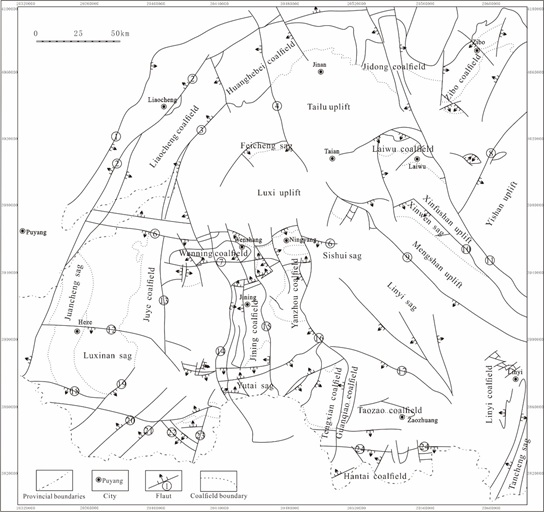 Figure 1: The figure of regional structure and regional position schemesin the western Shandong province.
Figure 1: The figure of regional structure and regional position schemesin the western Shandong province.
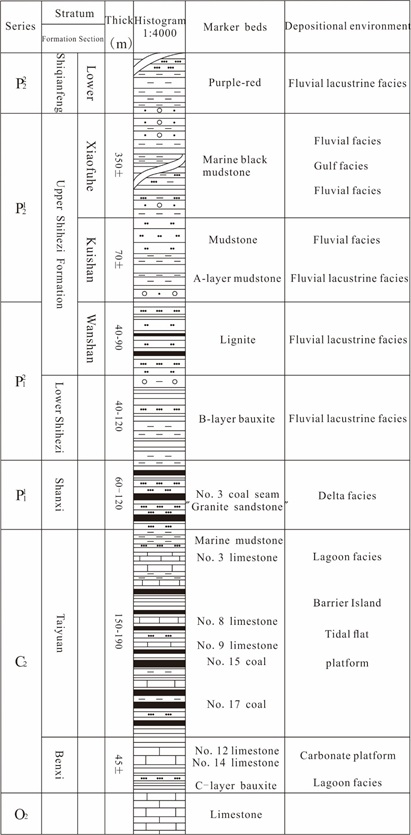 Figure2:The figure of integrated columnar in the late Paleozoic strata in the western Shandong province.
Figure2:The figure of integrated columnar in the late Paleozoic strata in the western Shandong province.
THE EVOLUTION OF THE LITHOFACIES PALAEOGEOGRAPHIC IN THE WESTERN OF SHANDONG PROVINCE DURING LATE PALEOZOIC
Benxi period
In the late carboniferous Benxi period, the sea water generally invaded the area from east to west, but first invaded in the southeast direction, and was first accepted for sedimentation in Linyi area. Subsequently, the sea water invaded all parts of western Shandong, while the sea water in Linyi area stopped depositing until the early Permian (Figure 3).Therefore, it can be inferred from the sedimentary records that a synsedimentary fault may have developed in the direction from Linyi north to Jiawang north to Huaibei north of Anhui province. Benxi formation is a set of aluminiferous deposits first accepted by the North China Plate after submerged in the early Late Carboniferous[17,18]. The main deposits are argillaceous deposits. The thickness of the strata is "thick in the north, thin in the south, thick in the East and thin in the west". According to the variation of the thickness of the strata, it can be judged that the sedimentary center of the study area is located in the north. The limestone of Benxi formation is mainly composed of marl deposits, reflecting that the whole study area is in shallow sea platform environment. According to drilling, the carbonate content in the eastern area is as high as 50%, mainly platform facies, indicating that transgression is intruded from the eastern part.
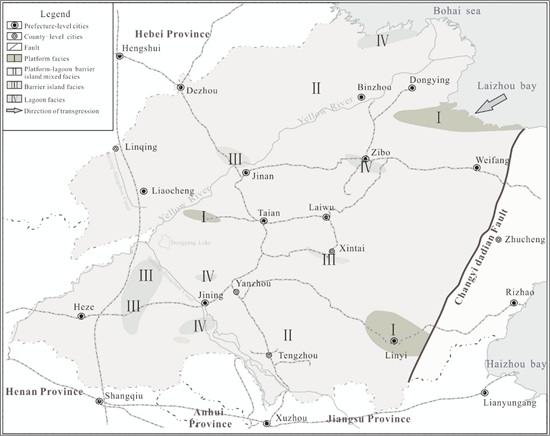 Figure 3:The late Carboniferous Benxi period in Shandong province lithofacies-paleogeography map.
Figure 3:The late Carboniferous Benxi period in Shandong province lithofacies-paleogeography map.
Taiyuan period
The Early Permian Taiyuan Formations was continuously deposited on the basis of the Benxi period sediments[19]. Because of the transgression, the vast area of tidal flat - lagoon deposits, mainly for the broad basic inherited the epicontinental sea sedimentary features, the late Carboniferous to the development of the barrier island, lagoon depositional systems, between platform systems, the general direction of transgression from the south-east still in Luxi area (Figure 4). At this time, Taiyuan Formation is composed of a set of limestone and mudstone sandstone. The coal seam distribution and strata of Taiyuan Formation are inherited to a certain extent, showing the characteristics of thin middle and thick sides, reflecting that there are relatively thick coal seams where transgression exists. Taiyuan period sandstones are mainly formed in lagoon and tidal flat environments. Sandstones are "thick in the north and thin in the south", reflecting that the northern areas are mainly tidal flat and lagoon environments.
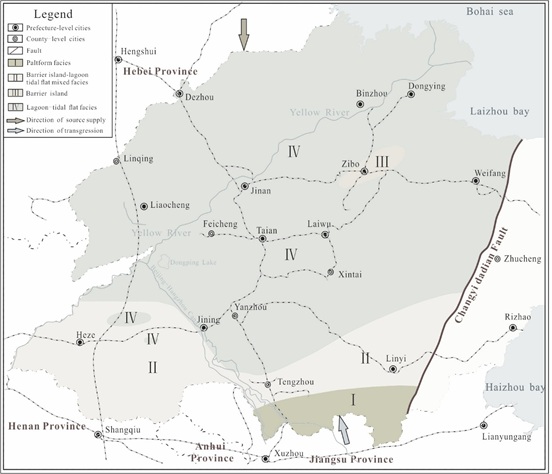 Figure 4:The early Permian Taiyuan period in Shandong province lithofacies-paleogeography map.
Figure 4:The early Permian Taiyuan period in Shandong province lithofacies-paleogeography map.
Shanxi period
The paleogeographic landscape with the delta environment as the main body was formed in Shanxi period (Figure 5), and the sedimentary assemblage with the delta system as the main body sandwiched with the river system developed. In the middle of early Permian, the southern part of Luzhong area is a sedimentary system dominated by river controlled shallow water delta, the lower part of northern Shanxi formation is a sedimentary system of delta front ~ delta distributary bay, and the upper part is still a river controlled delta sedimentary system. The coal seams in Shanxi period are thick in the north and thin in the south, mainly from water to coal, which represents the abandonment of marine sedimentary system. Mudstones are mainly formed between distributary channels, and generally show the characteristics of thick in the north and thin in the south, reflecting that there are two distributary bays mudstone deposits in the study area. The terrigenous clastic materials mainly import two distributary channels from the north of Linqing to the South and southeast, while the distributary Bay deposits mainly consist of sandstone, mudstone and coal seam are developed in other areas.
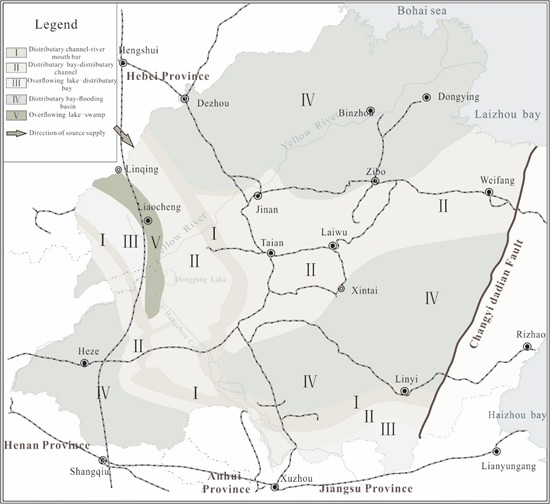 Figure 5:The early Permian Shanxi period in Shandong province lithofacies-paleogeography map.
Figure 5:The early Permian Shanxi period in Shandong province lithofacies-paleogeography map.
Shihezi period
Shihezi Formations - Heishan period
Period from the formation of the paleogeographic, this region is mainly in the alluvial plain, delta plain of paleogeographic pattern. The north of the north latitude 35°20′ mainly alluvial plain fiver-lake deposition system, is given priority to with delta plain facies, south of the river from the north and northeast into the area, the main development phase and beach flood basin facies, with shallow water lake facies, don't have coal forming conditions, reflect the sedimentary period of terrigenous clastics composed of northern supply of YinShan ancient geographical landscape (Figure 6). With the continuous uplift of the Yinshan paleocontinent in the north [20], the provenance supply is good, and a set of red continental clastic deposits are mainly deposited. The northern part of the stratum is thicker, the thickest is more than 300 meters, and the southern stratum is thinner. The thinnest area is less than 100 meters, reflecting that the provenance of the sedimentary area is in the north.
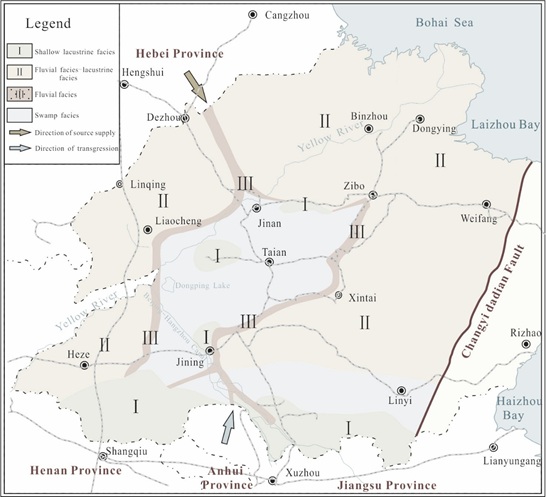 Figure 6: The Shihezi formation –Heishan period paleogeographic map.
Figure 6: The Shihezi formation –Heishan period paleogeographic map.
Shihezi Formation - Wanshan period
This period was formed in the paleogeographic pattern of alluvial plain, river and lake environment, and delta environment between them (Figure 7). The symbiotic assemblages of river, meander sand bar and flood basin are dominant in this area, with shallow lake facies between them. Delta plain is mainly developed in the southern region, and is dominated by flood basin, lake facies, swamp and flood plain, accompanied by peat swamp, forming lignite and coal with industrial value.
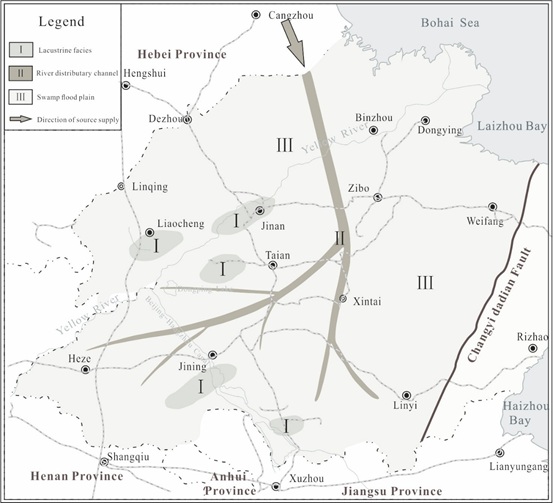 Figure 7: The Shihezi formation –Wanshan period paleogeographic map.
Figure 7: The Shihezi formation –Wanshan period paleogeographic map.
DISCUSSION
Based on the analysis of basin evolution and palaeogeographic background in Western Shandong, the following understandings can be obtained:
Source Area Supply
Sand body distribution, palaeogeographic pattern and palaeogeographic direction are important indicators reflecting provenance sources. The Benxi Formation in the late Carboniferous to the early Permian Taiyuan Formation is a stratum formed during transgression. It consists of terrigenous clastic rocks and carbonate rocks with coal seams. It is a barrier, lagoon, tidal flat and carbonate platform sedimentary system. After Shanxi epoch, due to the topography of "high in the north and low in the south", the provenance area mainly came from Yinshan ancient land in the north. The terrigenous debris was mainly imported into western Shandong from the north to the south of the river course. In the areas outside the river course, a large set of fine-grained flood basin deposits such as red mudstone were developed, and a large set of lake deposits were partly developed.
Distribution of sedimentary facies
Traditionally, the transgression direction of Benxi period is from south to north. According to the distribution of sedimentary facies, this study considers that the transgression direction is from east to west, and the sea water first intrudes from southeast. The study area is mainly composed of carbonate platform facies deposits. During the Taiyuan period, transgression reached its peak, carbonate platform facies developed in the southeast side, lagoon deposits developed in the north side, and tidal flat deposits developed in the rest of the area, along which a large number of coal seams developed. With the continuous uplift of Yinshan pale continent in Shanxi period, the difference between North and South in the study area intensified, seawater quitted rapidly, terrigenous debris was abundant and injected from Southeast direction. The distributary channel microfacies and inter-distributary Bay deposits of delta plain subfacies were the main deposits in Western Shandong. During the Lower Shihezi Formation, seawater withdrew from the area, and meandering river deposits were developed in Western Shandong, mainly in meandering channel and flooding basin deposits. During the Upper Shihezi Period, continental deposits such as meandering rivers and lakes were mainly developed, and red clastic sediments interbedded with purple sandstone, silt and mudstone were formed.
CONCLUSION
- Benxi period belongs to shallow marine sedimentary environment, and a set of platform-lagoon sedimentary system has been formed in this area. The Taiyuan tectonic movement was relatively stable. From the palaeoenvironments of the area, the northern part of the area had a late transgression and an early regression, mainly consisting of marine coal seams. The main sedimentary system in this period is marine-continental interactive sedimentary system.
- In Shanxi period, delta plain - delta front deposition developed in the broad coastal plain, lagoon and tidal flat basement. It is obviously controlled by paleogeographic features from its developmental characteristics.
- The Lower Shihezi period in this area is generally river and lake sedimentary system on alluvial plain. In the Upper Shihezi period, the sedimentary systems in the north and the middle of the area were dominated by the river-lake complex sedimentary system, while the facies in the south changed into the deltaic plain sedimentary facies and gulf sedimentary facies.
REFERENCES
- Li ZX, Li SC, Wei JC (1996) Types of Parasequence and Law of Coal Accumulation of Coal-bearing Sequence in the Paleozoic Epicontinental Sea Basin of Western Shandong Coalfield. Acta Sedimentologica sinica 3: 38-46.
- Wei JC, Li ZX, Li SC (1995) The Permo-Carboniferous Tidal Flat Depositional System and Coal-Accumulation in Southwest Shandong. Coal Geology of China 7: 25-30.
- Niu SY, Hu HB, Mao JW, Sun AQ, Xu CS, et al.(2004) Geological structure characteristics and its forming mechanism in western Shandong province. Chinese Geology 31: 34-38.
- Lu J, Shao LY (2010) Occurrence regularity and resource prediction of deep coal resources of Carboniferous-Permian in southwestern Shandong. Geological Publishing House, Beijing, China.
- Han ZZ, Yu JF, Wang XY, Sun D, Liu F (2000) Sedimentary and petrological characteristics of Carboniferous events in western Shandong. Coal Geology and Exploration 28: 1-3.
- Han ZZ, Li Y, Gao LH, Qin Z, Meng Y, et al. (2015) Shale gas potential of Carboniferous - Permian Taiyuan formation in western Shandong. Journal of Shandong University of Science and Technology (Natural Science). 34: 51-57.
- Lv DW, Li ZX, Chen JT, Liu HY, Guo JB, et al. (2011) Characteristics of the Permian coal-formed gas sandstone reservoirs in Bohai Bay Basin and the adjacent areas, North China. Journal of Petroleum Science and Engineering 78: 516-528.
- Lv DW, Chen JT (2014) Depositional environments and sequence stratigraphy of the Late Carboniferous_Early Permian coal-bearing successions (Shandong Province, China): Sequence development in an epicontinental basin. Journal of Asian Earth Sciences 79: 16-30.
- Lv DW, Li ZX, Liu HY, Li Y, Feng TT, et al. (2015) The Characteristics of Coal and Oil Shale in the Sea Areas of Huangxian Coalfield, Eastern China. Oil Shale 32: 204-217.
- Lv DW, Zhang MZ, Wang HY, Song GZ, Zhou ZQ,et al. (2016) Petroleum accumulation conditions of the Paleogene Shahejie formation in Qingdong Sag of Bohai Bay Basin, Eastern China. Arabian Journal of Geosciences 9: 1-16.
- Lv DW, Zong RF, Li ZX, Wang DD, Liu HY, et al. (2016) Oil shale paleo-productivity disturbed by sea water in a coal and oil shale bearing succession: A case study from the Paleogene Huangxian basin of Eastern China. Journal of Petroleum Science and Engineering 139: 62-70.
- Lv DW, Wang DD, Li ZX, Liu HY, Li Y (2017) Depositional environment, sequence stratigraphy and sedimentary mineralization mechanism in the coal bed- and oil shale-bearing succession: A case from the Paleogene Huangxian Basin of China. Journal of Petroleum Science and Engineering 148: 32-51.
- Yin S, Lv DW, Jin L, Ding WL (2018) Experimental analysis and application of the effect of stress on continental shale reservoir brittleness. Journal of Geophysics and Engineering 15: 478-494.
- Wei JC, Lv DW, ChenXY, (2011) Characteristics and Distribution of Condensed Seam in Continental Sea Coal-bearing Sedimentation in Western Shandong. Journal of Shandong University of Science and Technology(Natural Science) 30: 30-35.
- Sang SX, ChenSY, Liu HJ (2001) Study on Diversity of Late Paleozoic Coal-Forming Environments and Models in North China. Chinese Journal of Geology 36: 212-221.
- Lu J, Shao LY, Li WC, Huang ZL, Shao K, et al. (2012) Paleogeographic evolution and coal accumulation under sequence stratigraphic framework of a barrier coast. Journal of China Coal Society 37: 78-85.
- Jia LB, Zhong DK, Sun HT, Yan RT, Zhang CL, et al. (2019) Sediment Provenance Analysis and Tectonic Implication of the Benxi Formation, Ordos Basin. Acta Sedimentologica Sinica 28: 45-56.
- Hou YD, Chen AQ, Zhao WB, Dong GD, Yang S, et al. (2018) Analysis on the depositional environment of Carboniferous Benxi Formation tidal-delta sand body complex,Ordos Basin,China. Journal of Chengdu University of Technology(Science &Technology Edition) 45: 393-401.
- Huang XL(2018) Shale Gas Exploration Prospect of Shanxi Formation and Taiyuan Formation in Coal Bearing Area, Southwest of Shandong Province. Coal Technology 37: 82-85.
- Wang YC, Dong SW, Chen XH, Shi W, Wei LJ (2018) Yanshanian deformation along the northern margin of the North China Craton: Constraints from growth strata in the Shiguai Basin, Inner Mongolia, China. Basin Research 30: 1155-1179.
Citation: Li J, Liu H, Wang H, Gong G, Huang X, et al., (2019) The Evolution of the Lithofacies Palaeogeographic During Late Paleozoic in the Western of Shandong, Eastern China. J Atmos Earth Sci 3: 010.
Copyright: © 2019 Junpeng Li, et al. This is an open-access article distributed under the terms of the Creative Commons Attribution License, which permits unrestricted use, distribution, and reproduction in any medium, provided the original author and source are credited.

